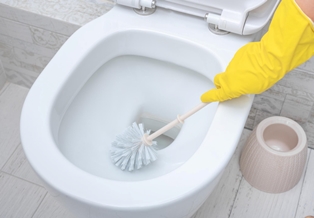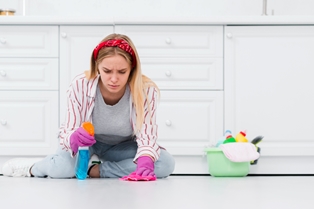Maintaining cleanliness and sanitation is essential in any environment, whether it’s a home, workplace, or public facility. However, when it comes to handling cleaning materials like a bucket of dirty mop water, knowing the correct procedures is often overlooked. Improper disposal of dirty mop water can lead to environmental contamination, health hazards, and even damage to plumbing systems. Therefore, understanding the proper way to handle and dispose of dirty mop water is crucial for maintaining a hygienic environment and ensuring safety.
In this article, we will explore the correct methods for handling a bucket of dirty mop water to minimize risks and promote cleanliness. From choosing the right equipment to disposing of the water safely, each step plays a vital role in maintaining cleanliness standards and preventing the spread of germs and bacteria. By following these guidelines, you can effectively manage dirty mop water and contribute to a healthier and safer environment for yourself and others. Let’s delve into the essential practices for handling dirty mop water with responsibility and care.
Where Should Employees Dispose of Mop Water?
Employees should dispose of mop water in designated areas specifically designated for wastewater disposal. These areas are typically equipped with floor drains or outdoor drainage systems that are designed to handle liquid waste safely. It’s important to avoid pouring mop water down sinks, toilets, or storm drains, as this can lead to contamination of water sources and environmental damage. Additionally, employees should adhere to any specific disposal guidelines provided by their workplace or local regulations to ensure proper handling of mop water and compliance with safety standards. If unsure about the appropriate disposal method, employees should consult with a supervisor or facilities manager for guidance.
Can You Pour Mop Water Down the Toilet?
Pouring mop water down the toilet is generally not recommended. While it might seem like a convenient disposal method, it can pose several issues. First, mop water may contain dirt, debris, and cleaning chemicals that could potentially clog or damage the plumbing system. Additionally, depending on the contents of the mop water, pouring it down the toilet could introduce harmful substances into the sewage system or septic tank, which can have negative environmental implications.

Furthermore, many municipalities have regulations against pouring cleaning wastewater, including mop water, down the toilet due to concerns about water contamination and environmental impact. Instead, it’s advisable to dispose of mop water in designated areas equipped with proper drainage systems, such as floor drains or outdoor disposal areas. Following proper disposal guidelines helps maintain cleanliness, prevent damage to plumbing infrastructure, and ensure environmental responsibility. If uncertain about the appropriate disposal method, it’s best to consult with a supervisor or facilities manager for guidance.
Can You Dump Mop Water Outside?
Dumping mop water outside is generally not recommended unless there is a designated area specifically designed for wastewater disposal. Pouring mop water directly onto the ground can lead to several issues.
Firstly, the water may contain dirt, debris, and cleaning chemicals that could harm plants, soil quality, and local ecosystems. Chemicals in the mop water could leach into the soil, potentially contaminating groundwater or nearby bodies of water.
Secondly, dumping mop water outside without proper containment or drainage can create slippery surfaces, posing a safety hazard to pedestrians and employees.
To ensure responsible disposal of mop water outside, it’s essential to use designated disposal areas equipped with appropriate drainage systems or containment measures. These areas are typically designed to handle liquid waste safely without causing harm to the environment or posing risks to health and safety.
If unsure about the appropriate disposal method, employees should consult with a supervisor or facilities manager for guidance to ensure compliance with safety standards and environmental regulations.
How Often Do You Have to Change Mop Water?
The frequency of changing mop water depends on various factors such as the size of the area being cleaned, the level of dirt and grime present, and the type of cleaning solution used. However, as a general guideline, it’s recommended to change mop water regularly during cleaning tasks to maintain effectiveness and hygiene.
For larger cleaning jobs or areas with heavy soil accumulation, it may be necessary to change mop water multiple times throughout the cleaning process to prevent spreading dirt and contaminants. Conversely, for smaller cleaning tasks or areas with minimal soil, changing the mop water less frequently may be sufficient.
A good rule of thumb is to change mop water whenever it becomes visibly dirty, cloudy, or has a foul odor. Additionally, if the cleaning solution being used loses its effectiveness or starts to leave streaks or residue on surfaces, it’s a sign that the mop water should be changed.
Ultimately, maintaining clean mop water is crucial for achieving satisfactory cleaning results and preventing the spread of germs and bacteria. Regularly changing mop water ensures that surfaces are thoroughly cleaned and sanitized, promoting a healthy and hygienic environment.
Mopping Tips:
Mopping is a fundamental part of keeping floors clean and hygienic. Here are some tips to help you get the most out of your mopping routine:
- Sweep or vacuum first: Before mopping, remove loose dirt, dust, and debris from the floor using a broom, vacuum cleaner, or dust mop. This prevents the mop from pushing around dirt and helps achieve a more thorough clean.
- Choose the right mop and cleaning solution: Select a mop that is suitable for the type of flooring you’re cleaning. Microfiber mops are excellent for capturing dirt and debris, while string mops are better for scrubbing tougher stains. Use a cleaning solution appropriate for your floor type, whether it’s a neutral pH cleaner for most surfaces or a specialized solution for specific flooring materials.
- Use the correct mop technique: Start mopping from the farthest corner of the room and work your way toward the exit to avoid stepping on the freshly cleaned floor. Use figure-eight or “S” shaped motions to effectively cover the entire floor surface. Avoid using excessive water, as this can lead to streaks and water damage on certain floor types.
- Change mop water regularly: As mop water becomes dirty or contaminated, it loses its effectiveness at cleaning and sanitizing. Change the mop water frequently, especially when it becomes visibly dirty or starts to smell. This ensures that you’re not spreading dirt around and helps maintain a hygienic environment.
- Focus on high-traffic areas: Pay extra attention to areas that receive heavy foot traffic or are prone to spills and stains. Spend more time and effort mopping these areas to ensure they are thoroughly cleaned and sanitized.
- Allow floors to dry completely: After mopping, allow the floors to air dry completely before walking on them or replacing furniture and rugs. This prevents slips and falls and helps maintain the cleanliness of the freshly mopped floors.
- Clean and maintain your mop: After each use, rinse the mop thoroughly to remove dirt and cleaning solution residue. Hang the mop to air dry in a well-ventilated area to prevent mold and mildew growth. Regularly launder or replace mop heads as needed to ensure optimal cleaning performance.
By following these mopping tips, you can achieve cleaner, healthier floors and maintain a hygienic environment in your home or workplace.
Conclusion
The correct way to handle a bucket of dirty mop water involves several key steps. Firstly, ensure that you have the appropriate cleaning equipment and disposal methods in place. Remove any solid debris from the water before disposing of it in designated areas, such as floor drains or outdoor drainage systems. Dilute and neutralize the water if necessary, especially when dealing with harsh cleaning chemicals. Properly clean and sanitize the mop bucket after use, and store cleaning materials safely. Throughout the process, prioritize safety by wearing gloves and avoiding splashing or spilling the water. By following these guidelines, you can effectively and responsibly handle dirty mop water, maintaining cleanliness and safety in your environment.





